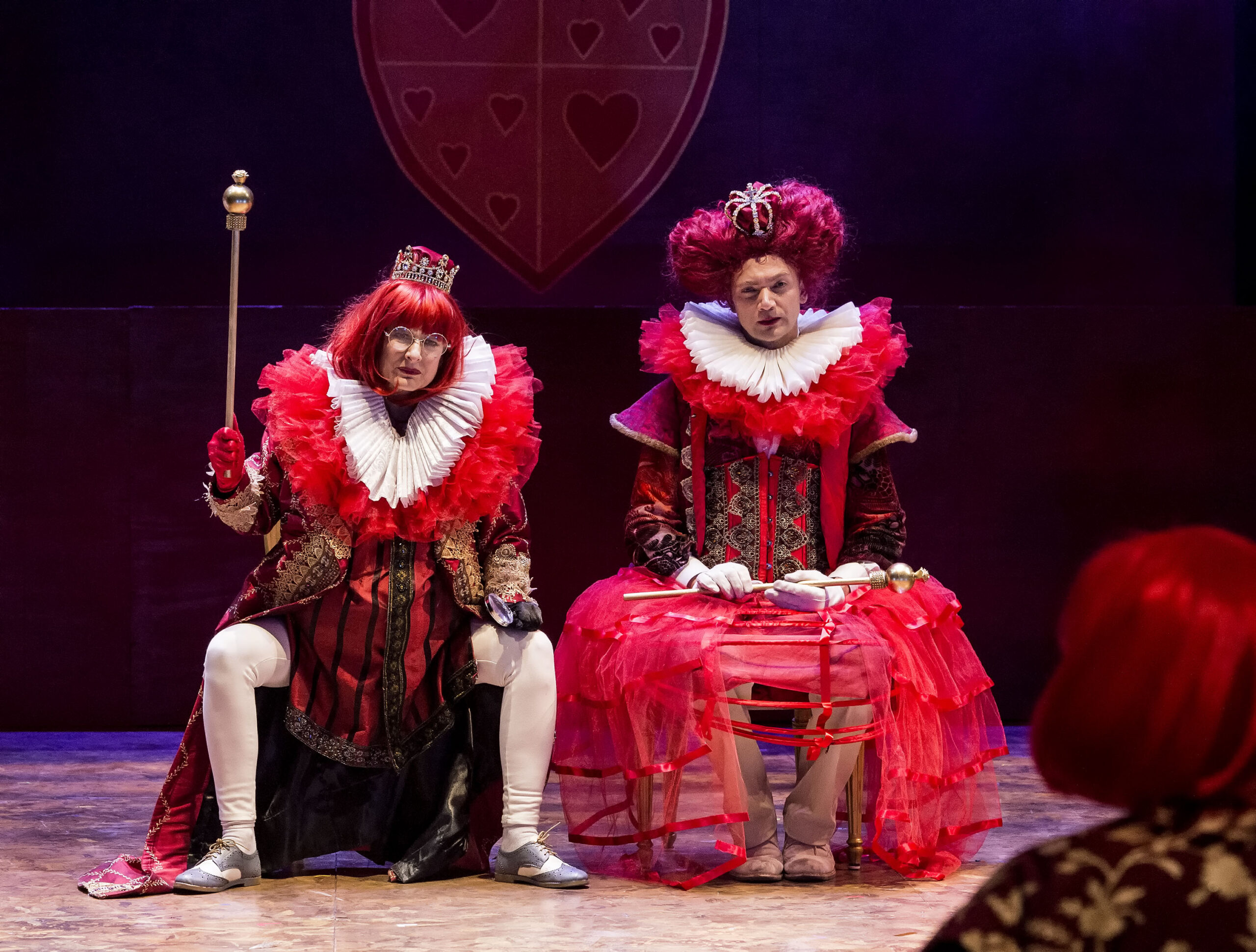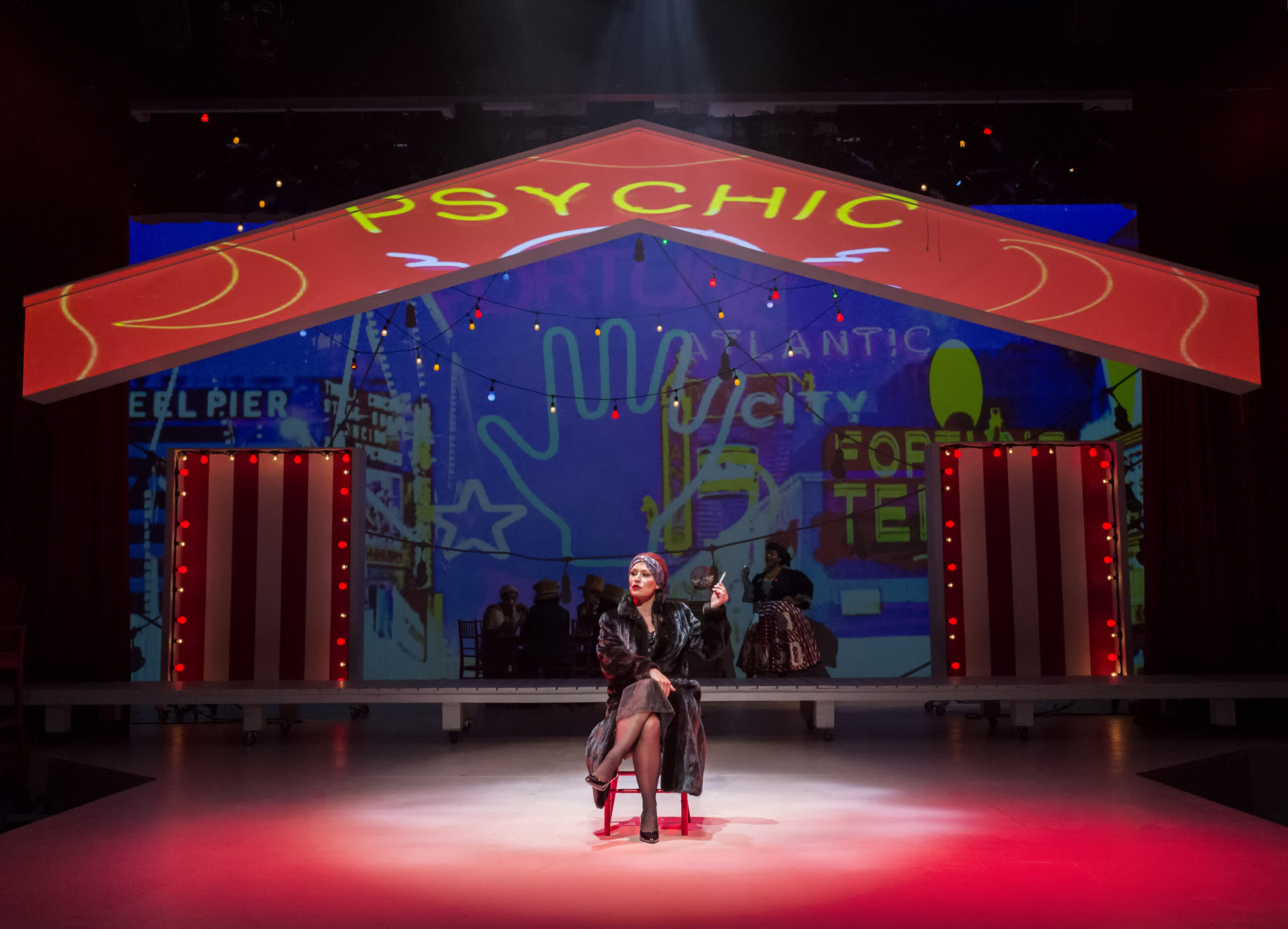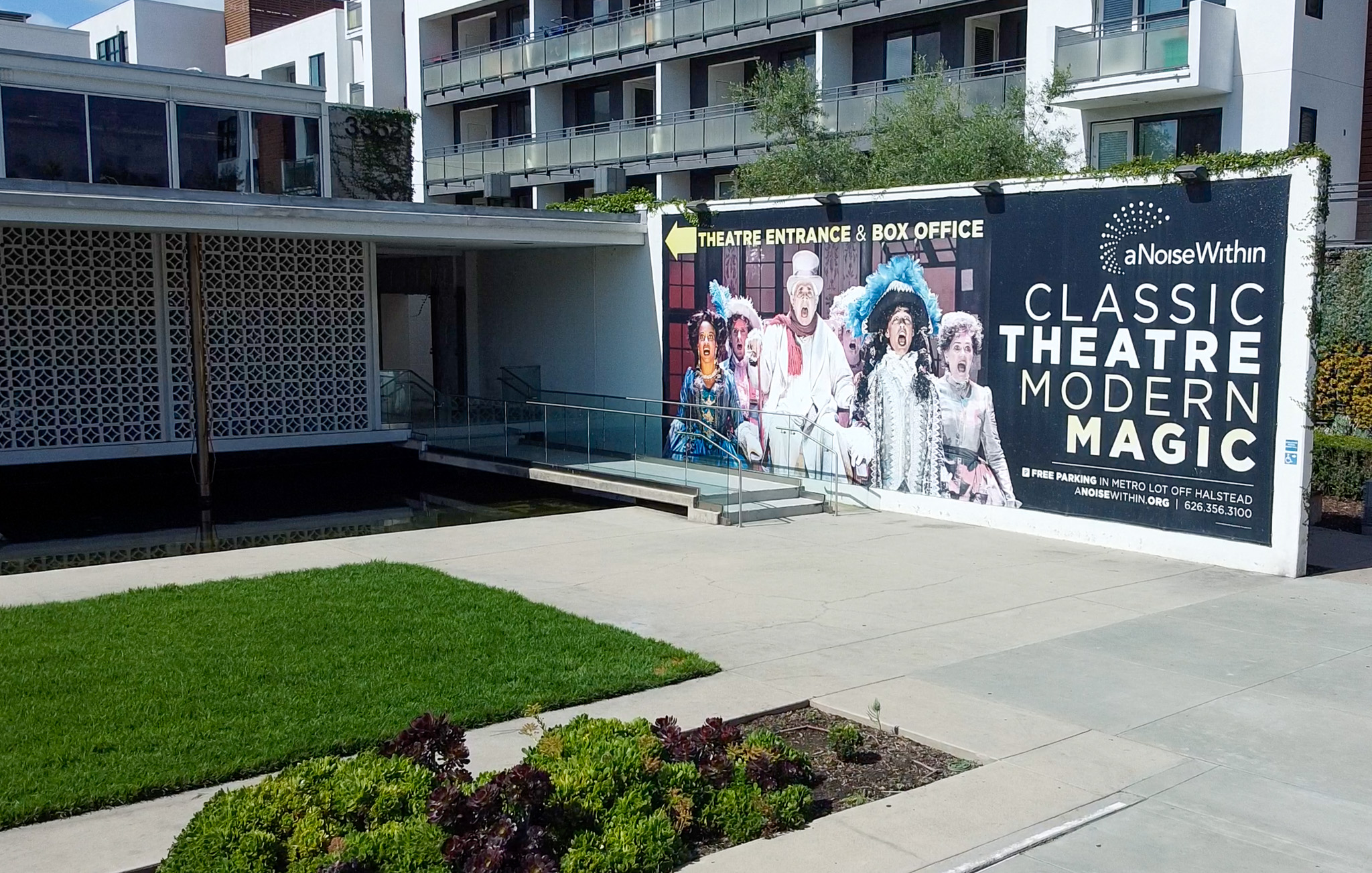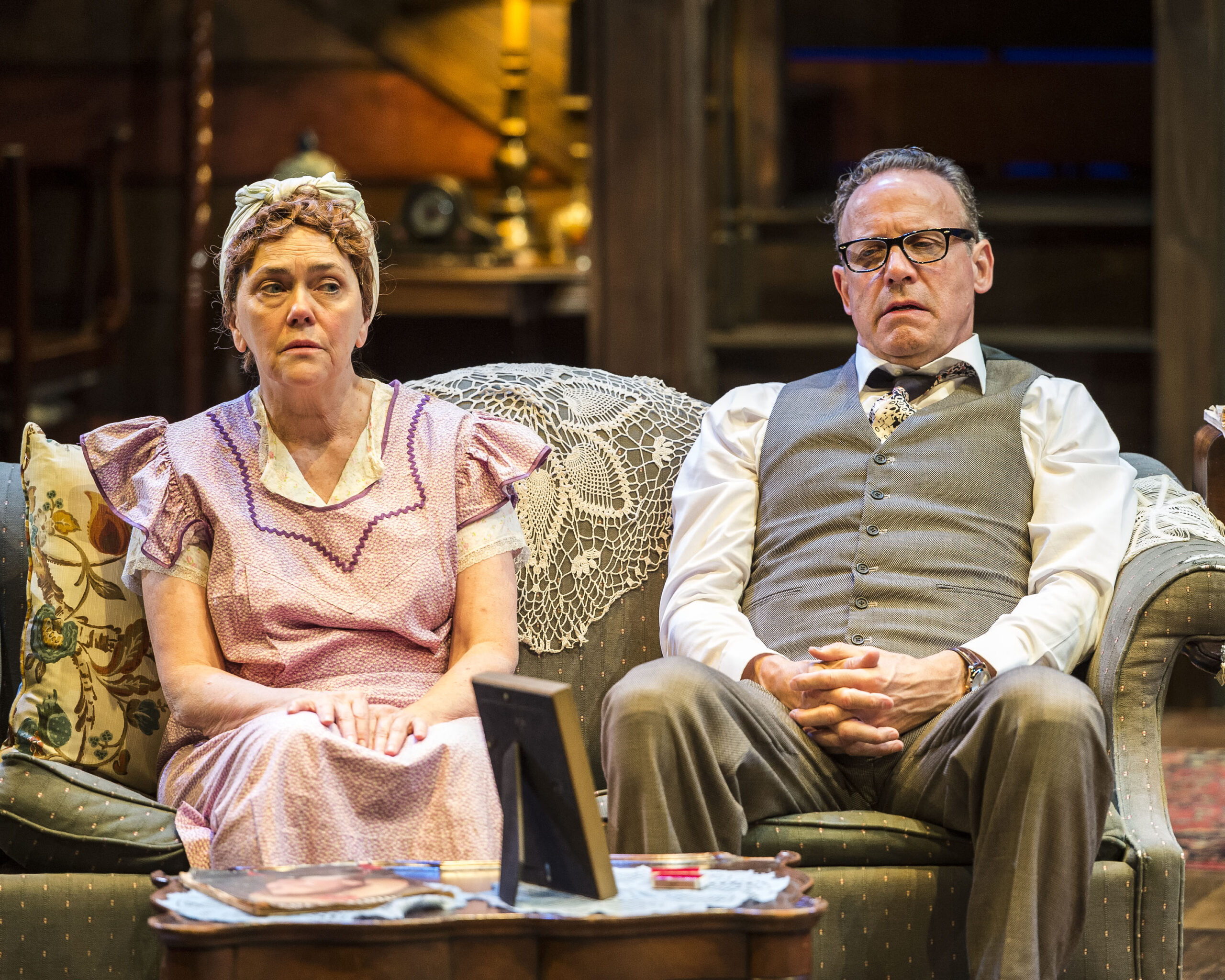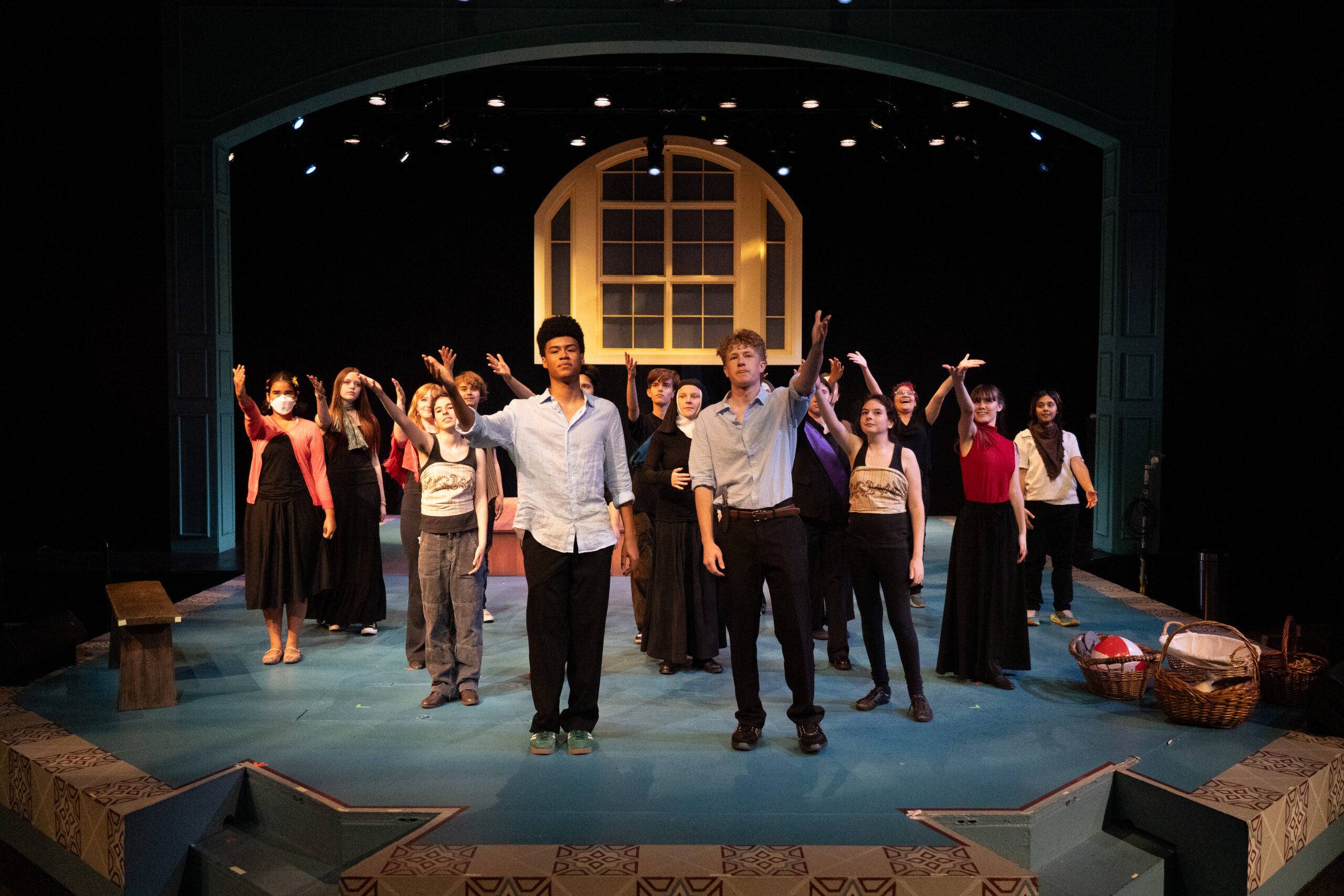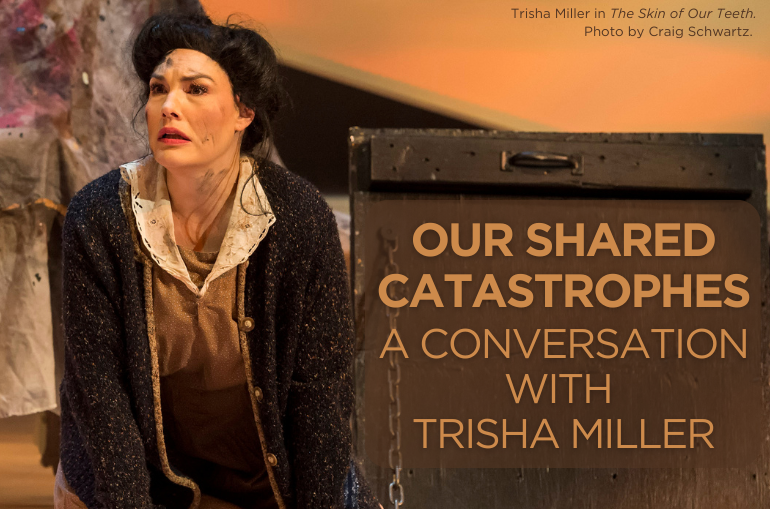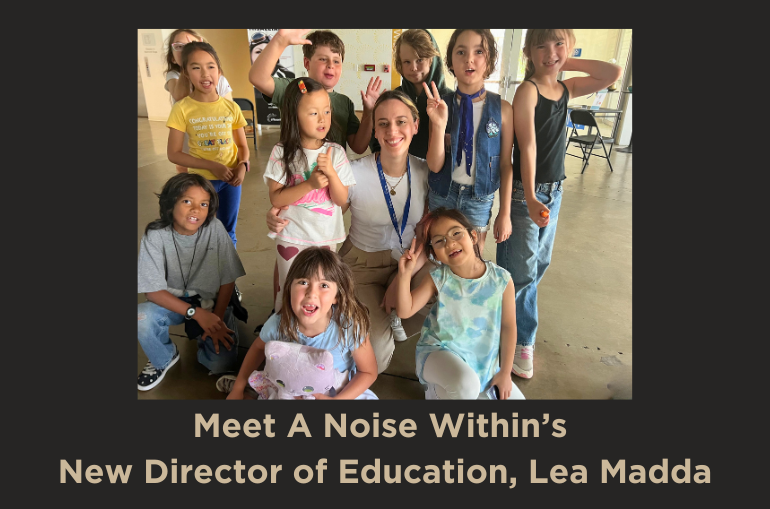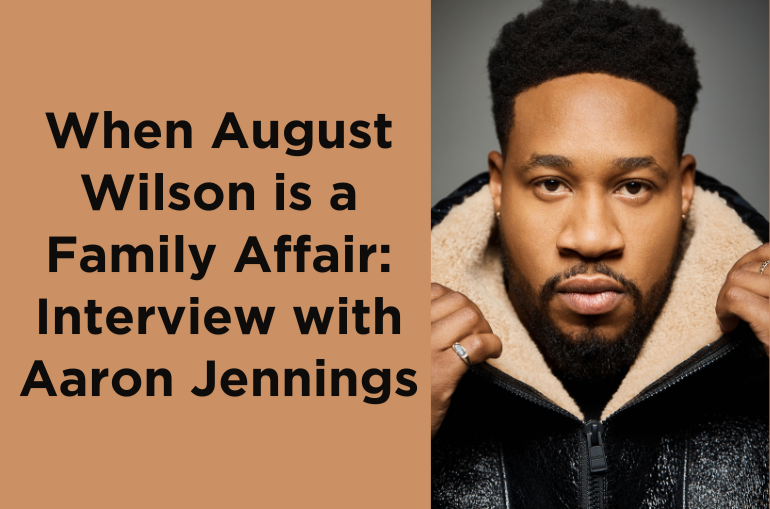Q&A with Frederica Nascimento on the World of Rosencrantz and Guildenstern
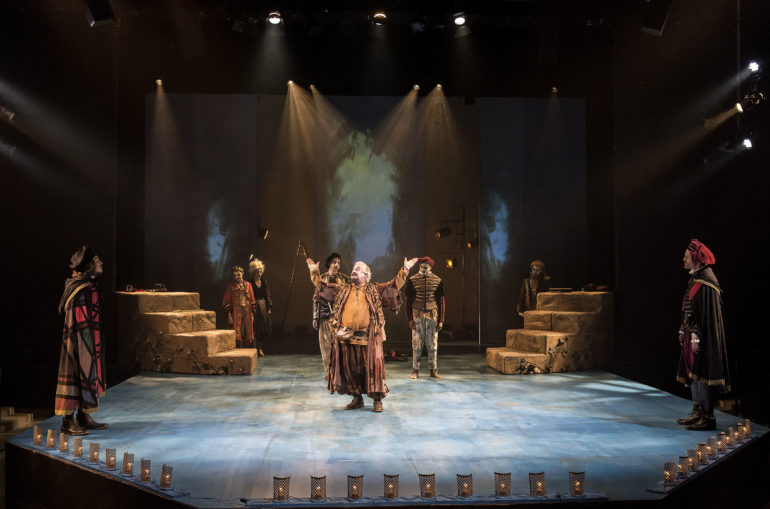
By A Noise Within
November 8, 2018
Join a conversation with Resident Artist Frederica Nascimento about her scenic design background and her inspiration for the world-building in Rosencrantz and Guildenstern Are Dead.
What attracted you to Rosencrantz and Guildenstern Are Dead?
I am always inspired by Tom Stoppard’s plays. He is brilliant. The two characters appear on stage when they are off-stage in Hamlet by Shakespeare, with the exception of a few short scenes. These two doomed friends take center stage in an exciting comedy filled with drama. It is absolutely hilarious.
What are some inspirations behind your design?
Infinite, Deep Blue Ocean, Circularity, Fate, Theatre, Greek Amphitheatre, Hearth, Stone, Water, Clouds, Time, Sky, Repetition. Ships and Sails, Wood, Barrels, Magic, Spectacle, Coffin, Comic and Tragic.
Is there a specific style or aesthetic you’re drawn to/ find yourself trying to achieve in your designs?
No, not at all. Each play has its own world. I believe in collaboration and that is my biggest strength. My hope is to continue to design in theaters with all technical possibilities available, work with directors that take risks in terms of experimenting with new things, translating the text into complex and abstract ideas, and bring new emotional dynamics to the stage.
Have you worked with A Noise Within before? What drew you to A Noise Within?
I am a Resident Artist with a Noise Within. I started my collaboration with the company in the Fall of 2014, and my first play was Tartuffe by Molière, directed by Julia Rodriguez-Elliott. It was a perfect theatrical experience. Sometimes in our professional life we find places that feel like home. The respect, admiration and collaboration between the members of the company are an inspiration. A Noise Within is “one of the nation’s premier classical repertory companies” and I am thrilled to be part of it.
How did you first become interested in theatre design?
I always had a passion for Theatre and Film. I was always drawing, painting and building things around me. I went to the Conservatory of the Arts to study Theatre (Set and Costumes) before I became an Architect. While I was studying architecture, I was already working professionally at a theatre in Portugal. Film came later, in the middle of it all when José Alvaro Morais, a very important film director, saw my work at the theatre and… Well, it is a long story!
How do you know in the end if your design is successful?
A design is successful if it is inspiring and functional for the director and actors and works perfectly with the other designs (lighting, costumes, sound) and each spectator sees the play as a whole.
